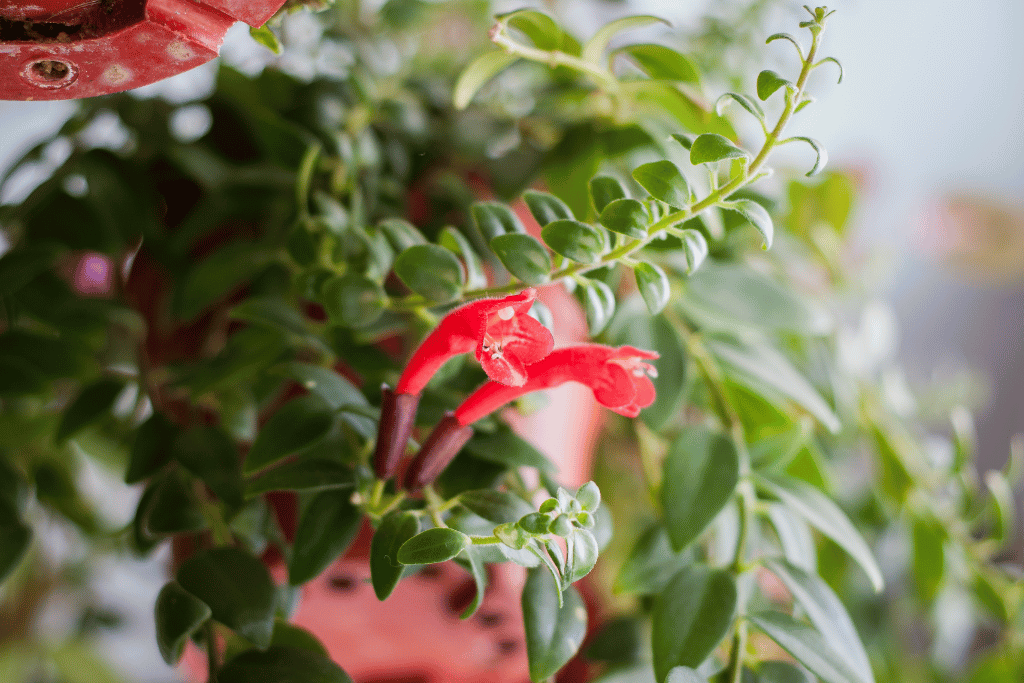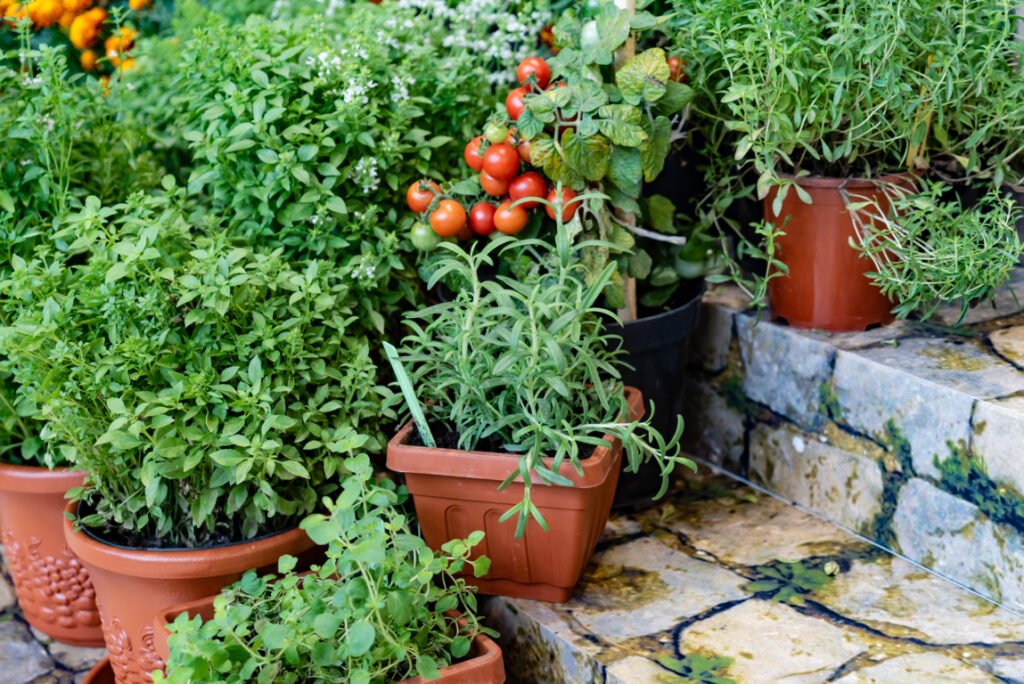
I have a habit of starting LOTS of seeds every winter. While it’s chilly and snowy outdoors, I have delusions of grandeur. Maybe chalk it up to cabin fever.
Should I start some seeds to celebrate Christmas?
What exotic heirloom variety can I grow this year?
How many pounds of tomatoes can I harvest and bring to the market?
I definitely didn’t have enough last year.
And so on…
This inevitably leads to an overwhelming problem. A good problem, but one that needs a solution nonetheless.
What the heck am I going to do with all of these seedlings?
There’s enough garden space to plant out plenty of fruits, veggies and herbs, yet never quite enough to match the height of my aspirations during the depths of the wintertime blues.
In the spring when the weather is warming up, seedlings are selectively chosen and transplanted to larger containers. It’s such a struggle to leave any behind.
But the garden fills rapidly. And I, like most gardeners, have to fight the urge to overcrowd.
So what to do with the stragglers left in their seed starting trays? Dust off all those containers from last year, and start once again the same familiar process. I can’t bear to see any seedling go to waste, so into a pot they go.
The deck, porch and every corner of the garden becomes littered with odds and ends containers, sporting happy little plants. Friends who never knew they needed a half dozen tomato plants become proud new gardeners.
Container gardening is a very convenient solution to my seed starting obsession. But growing in containers has lots of other benefits too.
In this article we’ll first discuss the pros and cons of container gardening, give you plenty of creative ideas for starting your own container garden and finally, provide some insider tips of the trade.
Advantages of Container Gardening
No matter where you live or what amount of space is available, container gardening presents tons of advantages.
- Growing in containers is a great way for a beginner to get started gardening. There’s no reason to dig up and till large garden beds when you’re still unsure of your skills or commitment level. Start slow with a few small containers to keep from getting in over your head.
- Container gardening is versatile. Move containers to and fro with ease, livening up spaces that wouldn’t typically be home to fresh flowers or herbs. Fit them into small spaces or grow indoors on a windowsill or under lights. It’s possible, and a popular practice, to grow year round.
- If a plant fades or dies, dump it out and try something new!
- Choose your soil of choice to fill up your containers. Starting with fresh, rich soil will result in happy plants.
- No weeding involved! The amount of effort and time you have to invest is minimal compared to traditional gardening.
- From seed to harvest, the process is much cleaner and easier.
It’s plain to see that any level gardener, regardless of space restrictions, can take advantage of the benefits container gardening offers.
In order to cover all our bases, let’s discuss the few drawbacks of container gardening.
Disadvantages of Container Gardening
Of course, there is no silver bullet in the world of gardening. Every method, tip and trick has its negative side. It’s a pastime that will always require work. So, what are the disadvantages of container gardening?
- The size of your plants, and their ability to reach maturity, will be limited to the volume of your containers. Larger growth and heavier yields are more likely to be produced in a garden bed.
- Potted plants need plenty of attention and care. They require more frequent watering than plants in the ground. The small amount of soil dries out quickly on hot days. In the middle of summer, containers may even require two waterings a day, based on their size and location.
- There are startup costs involved with container gardening. You must purchase pots or planters, soil and fertilizers. It’s actually pretty easy to source free containers from neighbors or garden centers. Just be sure to clean and sanitize used containers.
- You will need to have a storage space for all the containers in the offseason. This is made easy by investing in uniform pots that can be stacked.
At this point, you may be wondering what kind of container is best. Well, I’ll provide an exhaustive list here, and let you decide.
Types of Containers
Gardening containers can be made out of almost anything. The only limit is your creativity. That said, I’ll highlight the most popular and practical materials.
Plastic
Containers made of plastic are ubiquitous. The most commonly stocked pots come in every imaginable color, shape, style and size. They’re a great choice, especially for beginners, being the cheapest option overall.
On the other hand, they’re plastic. Not the most environmentally friendly material, they begin to fall apart after one or two seasons. They don’t hold up well to constant direct sun or freezing cold temperatures.
Terracotta
Also referred to as clay pots, these have been a standard favorite of gardeners for a long time. They’re in fact made with clay from the earth that is fired and shaped into a pot. These too are on the cheaper side and available in a plethora of shapes and sizes. Terracotta containers are sturdy and heavy, able to resist strong wind gusts.
Their natural look and placid color make them an attractive choice. Try involving children for a fun art project. They can be painted and styled with patterns, designs and pictures.
Unfortunately, terracotta breaks quite easily. And the porous nature of clay leads these containers to dry out quicker than others. You’ll have to stay on top of watering them.
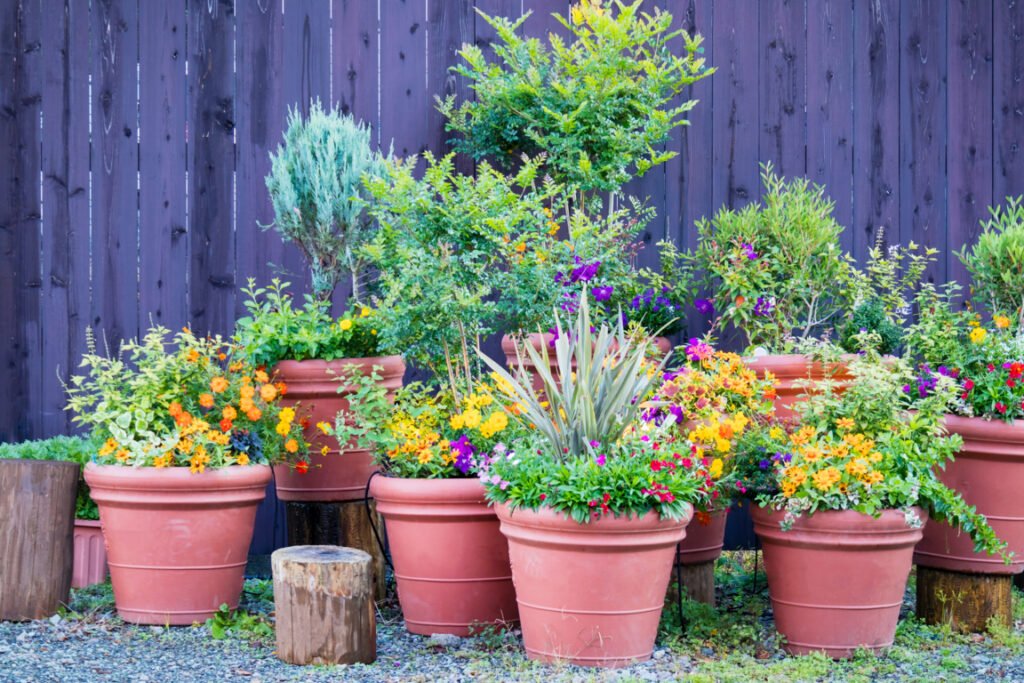
Wood
Wooden planters are another natural option. They blend right in with rustic decorations and the outdoor landscape. Wood will weather the elements reasonably well and can be left outside in all seasons.
The downside of wood is that over time they will start to rot and decompose. Some wood is resistant to rot, but tends to be more expensive. Be careful of treated wood if you plan on growing produce.
Metal
Metal planters can be highly decorative, adding beauty and intrigue around the home or in the garden. Various metals are commonly used as containers like copper, bronze, cast iron and stainless steel.
One thing to be aware of is how quickly these pots can heat up in the sun. They will absorb heat and roast the roots of your plants. Just keep these metallic containers in full or partial shade and you shouldn’t have an issue.
Concrete
Concrete is surely the most durable container material, they won’t blow over in the wind and they can even help protect plants from frost. There are a variety of sizes available and they can add a rugged, yet decorative look to your growing space.
There are a few drawbacks to concrete containers though. They tend to be more expensive than others and are limited in look and style. Naturally, they can be very heavy.
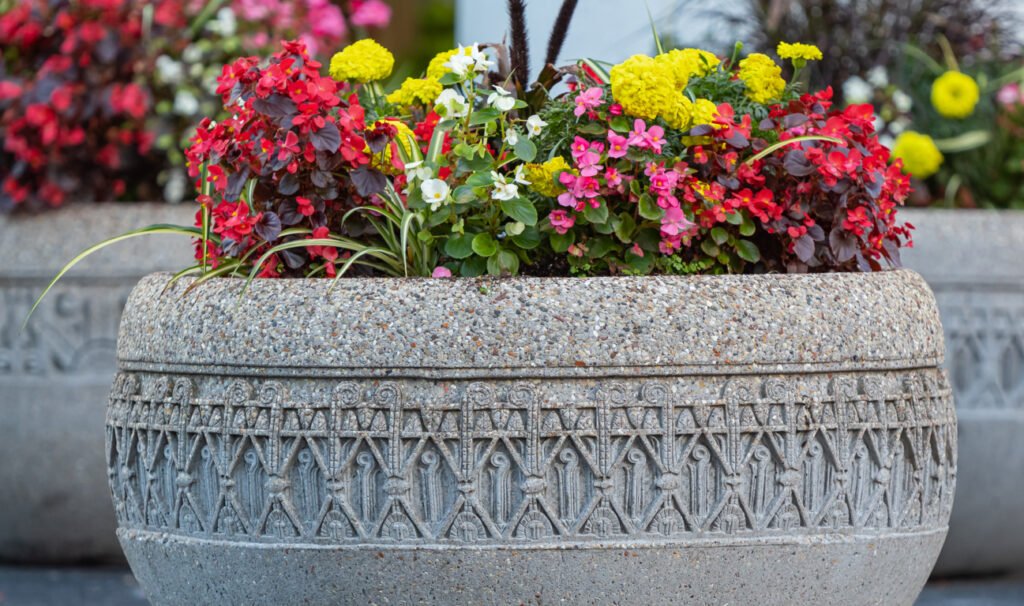
Fabric
Fabric containers are gaining in popularity in the gardening space. The woven fabric allows for excellent airflow and drainage. The breathability of the fabric air prunes the roots, leading to a more fibrous root system. This increases uptake of water and nutrients, greatly improving plant health.
Fabric containers are lightweight, washable and reusable, making them a versatile option and worthy consideration for container gardening. Check out our article on fabric containers gardening.
Just be aware that they do dry out quickly because of their porosity, so don’t be stingy with the watering.
Alright, now we can get to the fun part. Let’s dive into a bunch of fun and creative container gardening ideas.
Unique Container Gardening Ideas
There are tons of creative ways to use containers to showcase elegance, maximize space and tap into your creative side.
Pots on a Shelf
Have any old shelving laying around? If not, they’re easy to come by or build on your own. Place a shelf in a corner or against an empty wall and fill it up with pots of the same material or tone.
Try some dainty flowers like pansies or forget-me-nots. Herbs like lavender, lemon balm, or sage would add beauty and an amazing aroma for all passersby. Accent with ferns or succulents to invite intrigue or line up potted mums and asters for a burst of bright colors in the fall.
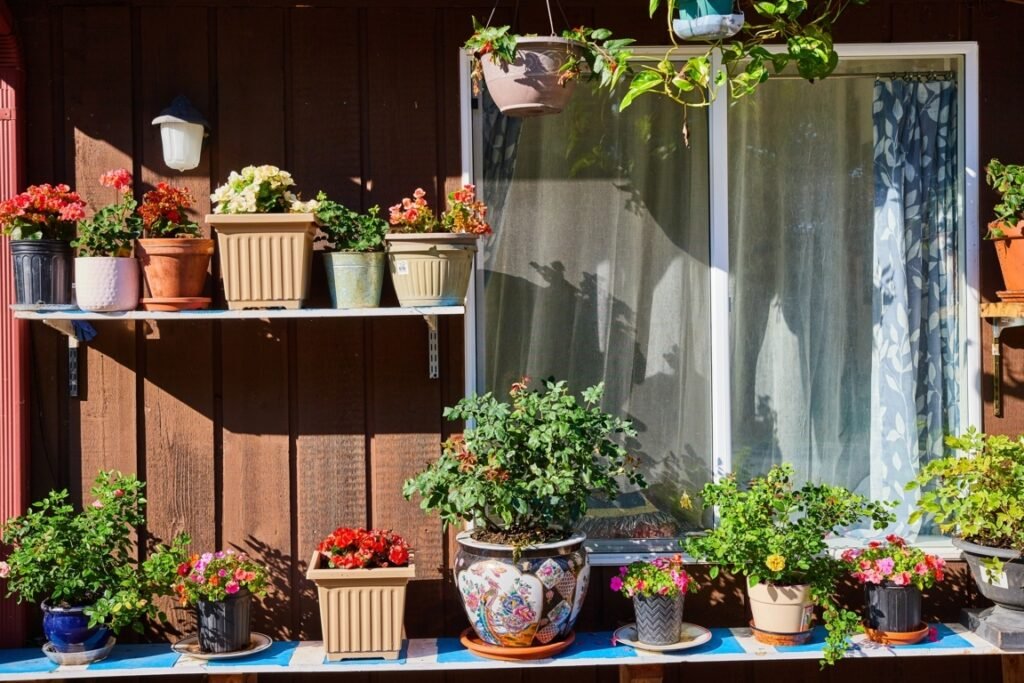
Start a Personal Orchard
Long gone are the days where one needs acres of land to produce delicious tree fruit. Find a few large containers and invest in a handful of dwarf trees of your favorite fruit.
Set them in an open sunny space or against a wall and grow them espalier style. Imagine, fresh homegrown tree fruit every fall, what could be sweeter?
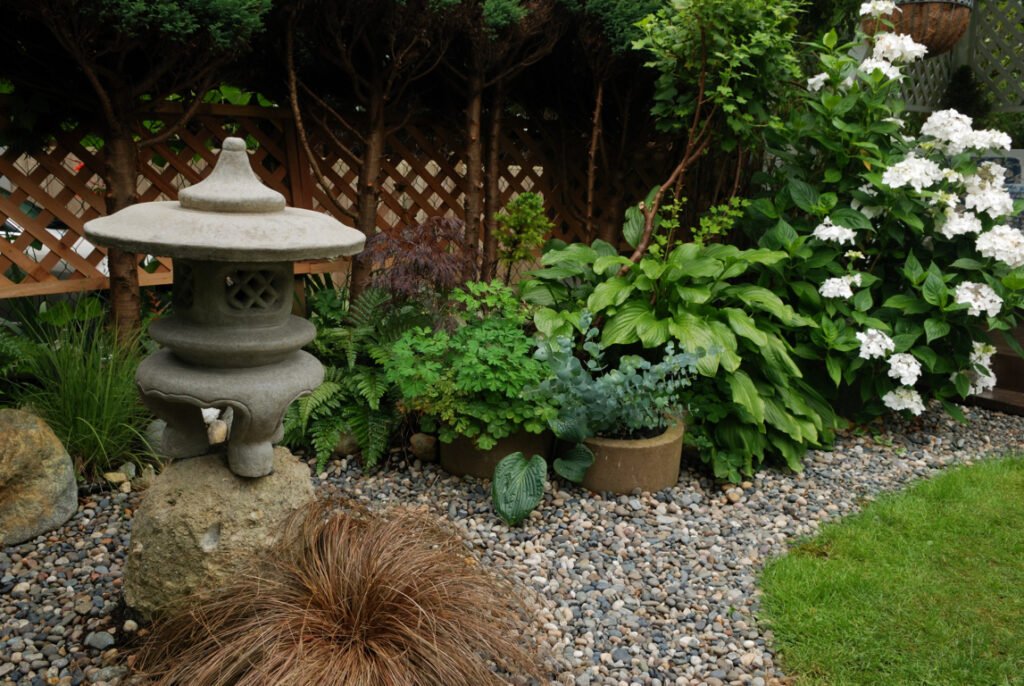
Plant a Potted Shade Garden
Do you live in a woodsy area or receive a lot of daytime shade? There are lots of plants that thrive out of the sun, even in small containers.
Try planting the likes of hostas, ferns, coleus, astilbe, impatiens or bleeding heart into rustic or earthen containers. Move them to a shady place on your property and use it as a peaceful retreat on those long, hot summer days.
Grow a Miniature Herb Garden
There are interesting planters on the market that are tall and deep with many side pockets for planting. Get your hands on one of these and plant it out with all of your favorite herbs.
It’s guaranteed to be your most aromatic container. Keep it close to the door and snip fresh herbs to season all your summer suppers. Bon appetit!
Potted Spring Bulbs
Celebrate spring with a showy display of early arriving blooms.
Plant a bunch of spring flower bulbs in containers, almost any size pot will do. Daffodils, tulips, iris and crocus will burst with color, welcoming the spring season. They look so neat, tidy and happy growing in containers. They’ll be easy to maintain too.
Arrange them in creative ways, at different heights and areas of the garden to enjoy their cheerful presence and the arrival of spring.
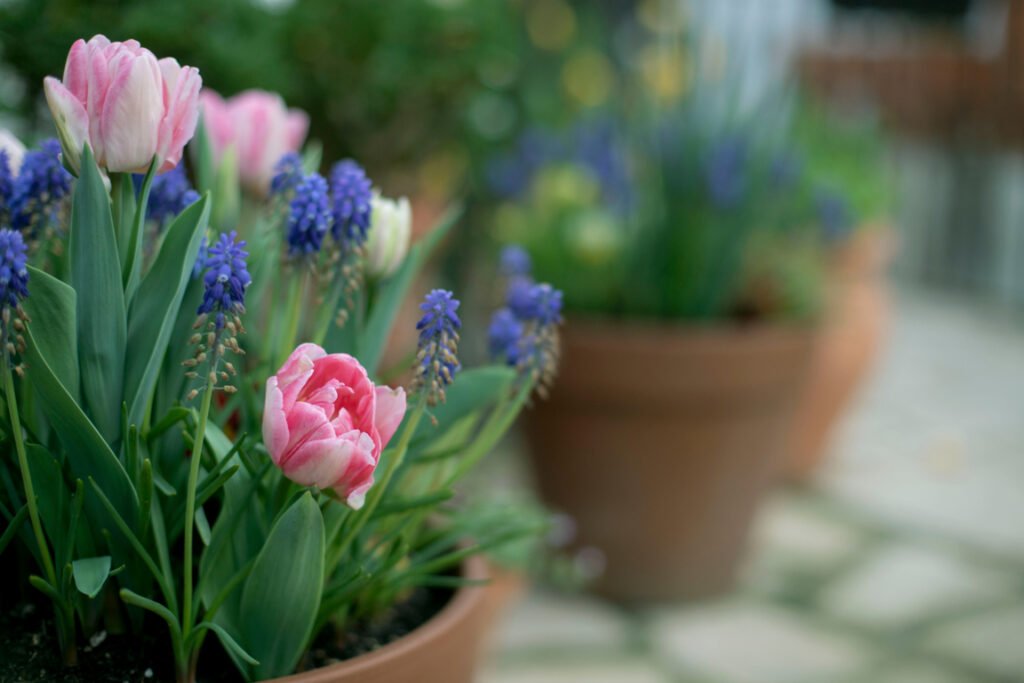
Plant a Salad Container
Grab a large container (maybe 10 gallons or so) and gather all of your favorite lettuce varieties. Position the pot close to the house and plant multiple types of greens in the container. You could even plop a pea or cucumber plant right in the middle! Enjoy fresh salads all season long in the form of convenient, healthy fast food.
Hanging Baskets
Grow colorful flowers in a hanging basket and install a few hooks in an area that needs some brightening up. Hanging baskets can liven up a front porch, deck or patio. They’ll also add wildlife interest as birds, bees and butterflies will come to visit.
For an edible hanging basket, try planting cherry tomatoes or strawberries and watch the fruit ripen up as it droops down. Easy pickings for a quick snack!
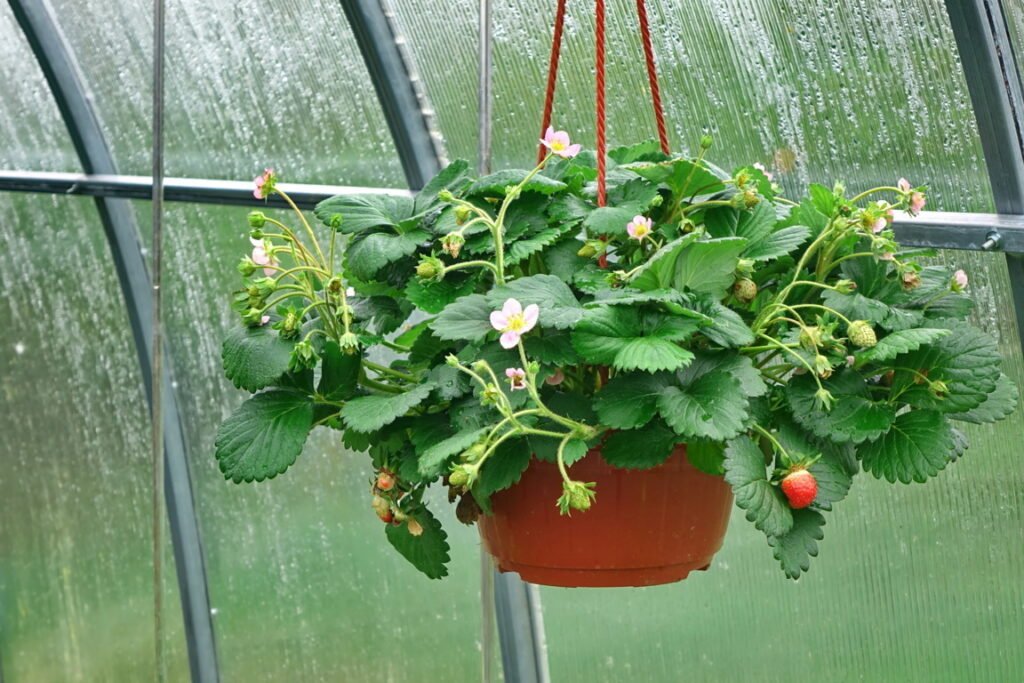
Grow Potatoes in a Pot
Here’s another idea that will require a larger sized container. Try to find one that is wide and deep. It’s a funny concept, but potatoes do surprisingly well grown in containers. I’ve had a lot of success using a big fabric pot to grow clean, nice sized potatoes.
Fill the pot about ⅓ of the way up, plant the small spuds and then cover them up. Water well and keep adding more soil as the stalks get taller until it reaches the top of the container.
When the foliage begins to yellow up and die back, dump it out and voila! Perfect pot grown potatoes.
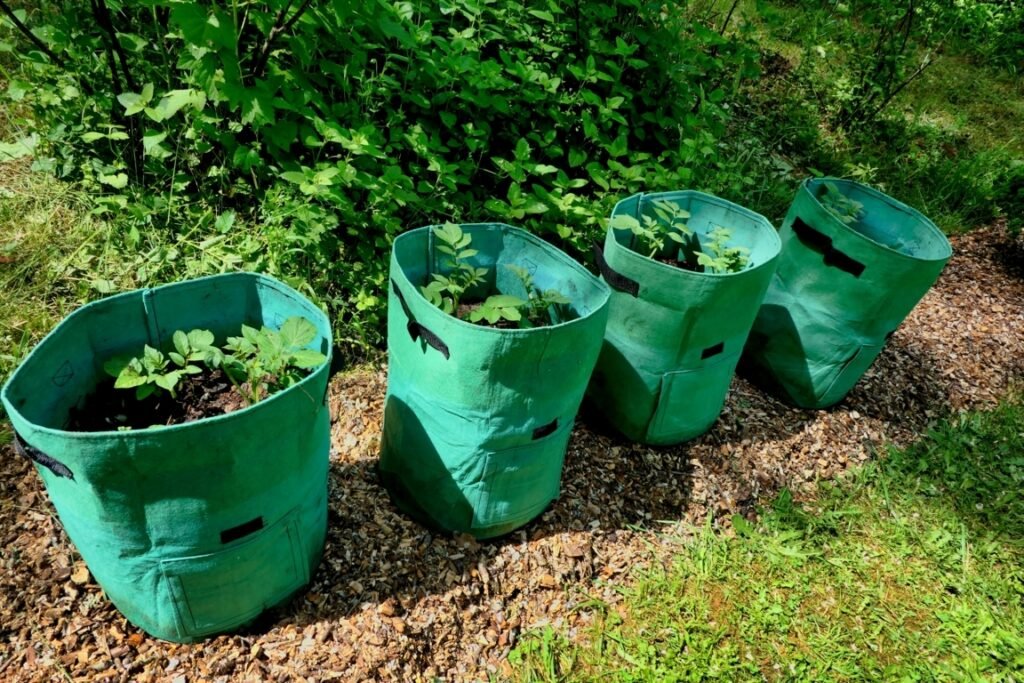
Plant an All-in-One Garden
Pick up a 40 gallon stock tank and fill it with soil. Then, plant all your favorite vegetables!
You can make it marinara themed by planting basil, tomatoes, onions and oregano.
Take a look at some of our companion planting guides for more compatible combinations.
Tips for the Beginner Container Gardener
Here are some helpful tips to get you started growing in containers.
- Put containers in a place where they’ll receive the right amount of sun. Plants like tomatoes and peppers require full sun, whereas lettuce thrives when it has some shady relief. Consider the material of your pots too and regulate the heat accordingly.
- All your containers should be within reach of a water source. It’s no fun filling watering cans all day, running back and forth to keep your plants hydrated.
- Keep your containers in a protected place if they’re light and liable to be blown over by the wind. They should also put in out of the way places where they won’t be tripped on or accidentally tipped over.
- Take advantage of microclimates. Pay attention to the conditions your plants need and put them in the appropriate place. Set heat loving plants on a warm driveway or walking path. Select a cool shady place in the lawn for plants that can’t stand up to full sun.
- Choose a large enough container to let your plant thrive. Provide a soil depth of at least 12” to ensure plants will have room to grow throughout the season. Kitchen herbs like basil or mint can be grown in small containers; use at least a 5 gallon container for vigorous growers like squash or tomatoes.
- Fill your containers with a quality potting soil.
- Water in the morning time and water deeply, only as frequently as needed. An occasional soaking is better for root growth than constant light waterings.
- Add a small amount of compost or a slow release fertilizer at planting time. Once they’re growing strong “feed weakly, weekly” with a liquid seaweed or fish emulsion fertilizer.
- Plants in containers quickly get top heavy as they grow tall. Support them early on with stakes, twine, trellises or cages.
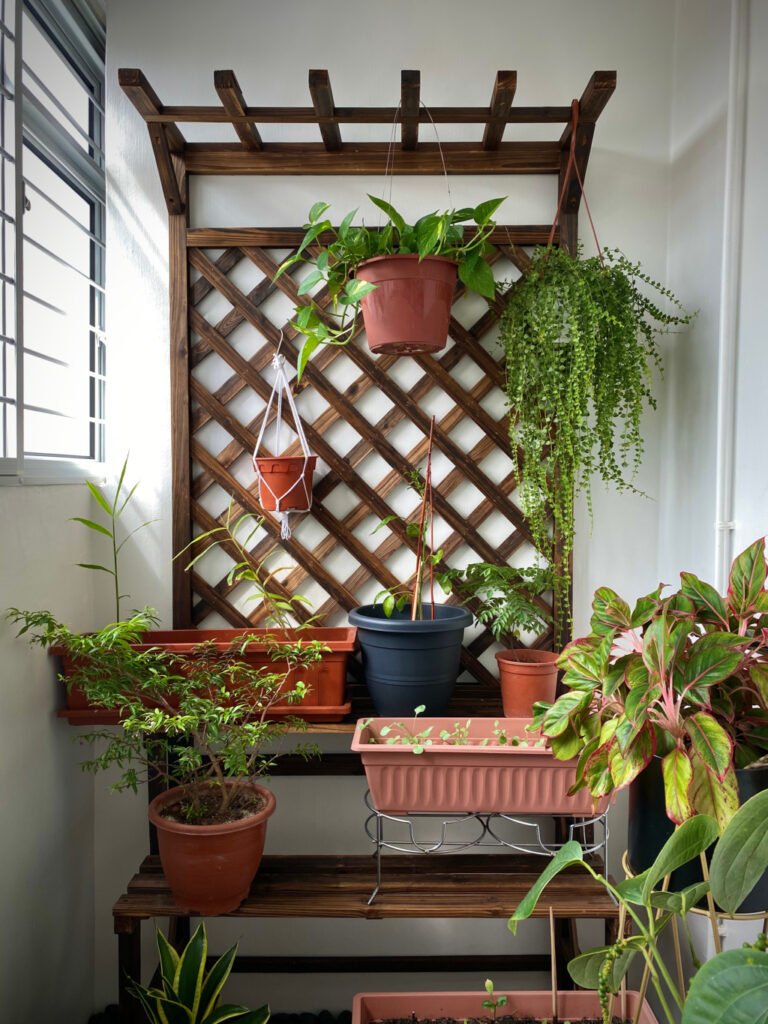
Start Small and Work Your Way Up
I think it’s fair to say that there are an abundance of versatile options when it comes to container gardening.
But, it’s easy to go overboard. Take it from me who, one spring, set up an emergency greenhouse kit just to house overgrown potted tomatoes.
The surest place to start is by picking up a few small containers and experimenting with materials, locations, soils and types of plants. Nothing is more rewarding than finding a combo that works just right.
Try out some of the ideas provided in this article and get creative, but beware, you just may become a crazy plant person like me!
Frequently Asked Questions (FAQ)
How do I make a container garden look attractive?
A lot goes into keeping up an appealing container garden. Put your plants in the right sized containers and set them up where they’ll get appropriate sun/shade. Maintain them well by watering, feeding and pruning or deadheading. Consider decorative or otherwise aesthetically pleasing containers.
What’s the best layout for a container garden?
There are many different possible designs for container gardens. Most importantly you should make it visible from far away, accent the shape of your space, use colorful plants, make it easy to maintain and don’t crowd or over complicate it.
What are the disadvantages of container gardening?
Containers dry out quickly, so they need more frequent watering. Plants don’t have as much space to grow to a large size.
What’s the most important aspect of container gardening?
Choosing the right size container is essential. It will determine how big your plant is able to grow and how much water and soil you’ll need.


